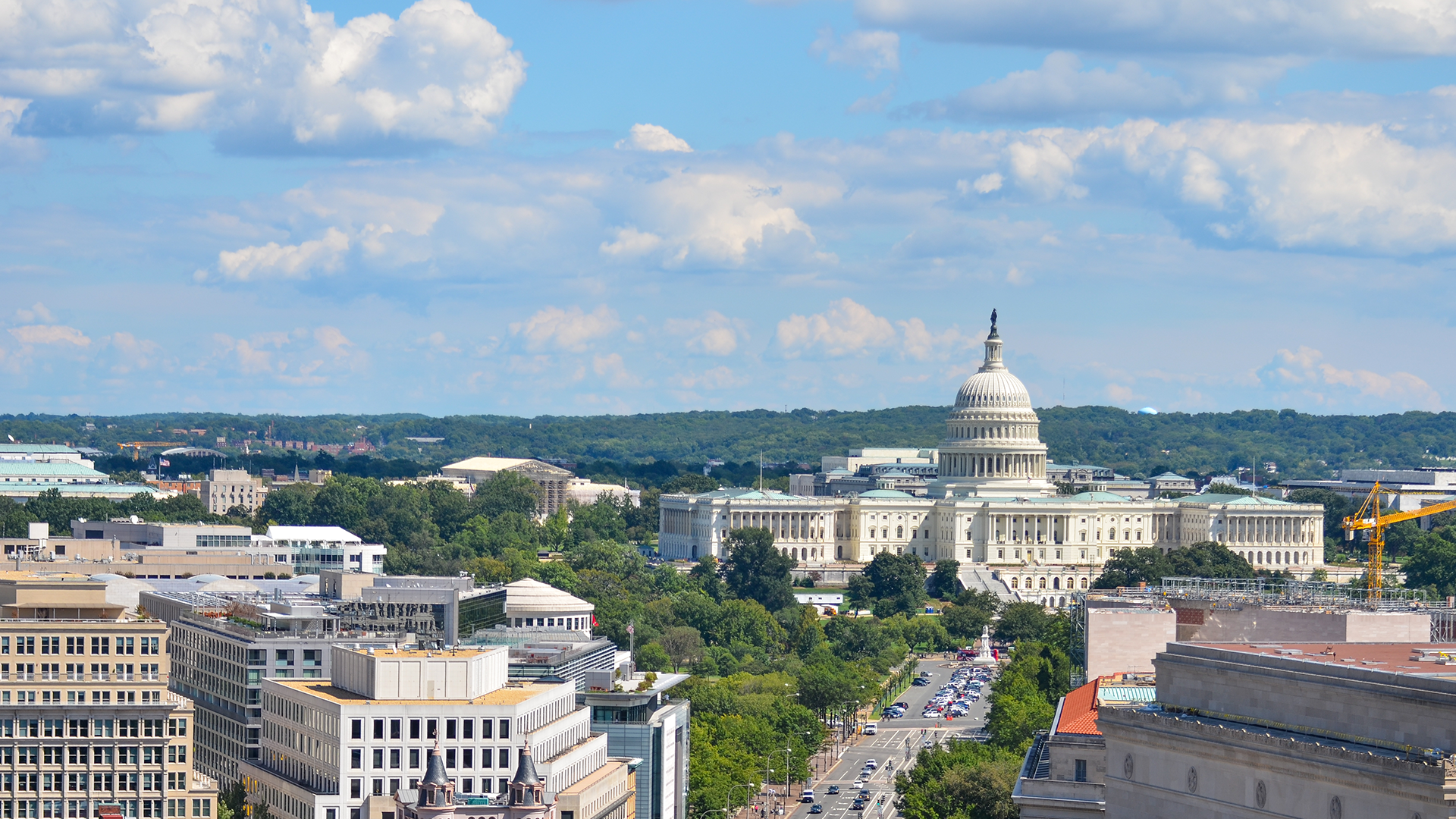
Publication
Road to COP29: Our insights
The 28th Conference of the Parties on Climate Change (COP28) took place on November 30 - December 12 in Dubai.


Author:
United States | Publication | March 2020
On Wednesday, President Trump signed into law the Families First Coronavirus Response Act (FFCRA), which provides relief to families and workers facing the global coronavirus pandemic.
The FFCRA was passed by the House of Representative in its initial form in the early morning hours of March 14, 2020, and amended on March 16, 2020, to make certain technical and other corrections. The Senate approved the bill Wednesday afternoon.
The FFCRA provides: (1) free diagnostic testing for coronavirus; (2) food assistance to low-income pregnant women and mothers with young children, food banks, seniors and students; (3) increased federal assistance to state Medicaid programs; (4) enhanced unemployment assistance to affected workers; and (5) paid sick leave and emergency federal Family and Medical Leave Act (FMLA) coverage to certain employees and individuals.
This update summarizes the paid sick leave and emergency FMLA leave provisions of the FFCRA. For a summary of key provisions related to the healthcare industry, see US State of the Union: COVID-19 now briefing.
The FFCRA’s paid sick leave and emergency FMLA provisions will become effective within 15 days of enactment and sunset on December 31, 2020.
The FFCRA’s paid sick leave and emergency FMLA provisions apply to employers with fewer than 500 employees and governmental employers, regardless of size. The FFCRA does not, however, provide clear guidance on whether employees of related private companies, subsidiaries, divisions or work locations will need to be aggregated for purposes of determining whether paid sick leave and emergency FMLA provisions apply to a particular employer. We hope that additional governmental guidance on this point will be issued in the near future.
The FFCRA’s paid sick leave and emergency FMLA provisions apply to employers with fewer than 500 employees and governmental employers, regardless of size.
Employers that are healthcare providers or emergency responders may elect not to provide emergency FMLA benefits and paid sick leave benefits in certain cases.
Subsequent regulations may provide potential exemptions for healthcare providers and emergency responders and for small businesses with fewer than 50 employees to avoid jeopardizing the viability of the business as an ongoing concern.
The FFCRA’s paid sick leave provisions generally apply to all employees of the covered employer. The FFCRA’s emergency FMLA leave provisions apply to employees who have worked at least 30 calendar days for the covered employer.
The FFCRA’s Emergency Paid Sick Leave Act requires covered employers to provide employees with up to 80 hours of paid sick leave (or the equivalent average hours worked over a two-week period for part-time employees) if the employee is unable to work (or telework) due to one or more of the following employee-related or family-related events:
FFCRA sick leave for employee-related events will be paid at the employee’s regular rate of pay. FFCRA’s sick leave for family-related events will be paid at ⅔ of the employee’s regular straight time rate. Paid sick leave will be limited to US$511 per day (US$5,110 in the aggregate) per employee for employee-related events and US$200 per day (US$2,000 in the aggregate) for family-related events.
FFCRA sick leave generally is payable by the employer. The employer will be eligible to receive certain tax credits discussed below. FFCRA paid sick leave may not be carried over from one year to another.
The FFCRA generally prohibits covered employers from:
Covered employers will be required to post notice of the employee’s right to take FFCRA paid sick in a conspicuous place. The US Secretary of Labor is directed to publish a model notice no later than seven days after enactment of the FFCRA.
The FFCRA’s Emergency Family and Medical Leave Expansion Act amends the FMLA to provide family and medical leave act coverage to employees who are unable to work (or telework) due to the need to care for the employee’s son or daughter under age 18, if the son or daughter’s school or place of care has been closed, or the son or daughter’s child care provider is unavailable due to the public health emergency.
The FFCRA provides for unpaid emergency FMLA leave for the first 10 days of the leave. The employee may choose to substitute accrued vacation, personal, medical or sick leave for the unpaid leave, including the FFCRA paid sick leave if the employee is eligible for such leave. The employer may not require the employee to substitute the unpaid leave for FFCRA paid sick leave.
After the initial 14 day period, a covered employer will be required to provide paid FFCRA emergency FMLA leave at a rate equal to ⅔ of the employee’s regular rate of pay and the number of hours that the employee normally is scheduled to work. The paid emergency FMLA leave is limited to US$200 per day and US$10,000 in the aggregate per employee. For employees whose hours vary from week to week, the covered employer generally must use the average number of hours that the employee was scheduled to work over the six-month period ending on the date the employee takes the leave, including hours for which the employee took any leave. For employees who have not worked over the six-month period, the average hours per day that the employee would normally be scheduled to work will be considered.
The FFCRA’s emergency FMLA counts toward and does not duplicate the overall 12-week limit on FMLA coverage during the applicable 12-month period.
Where the need for leave is foreseeable, an employee will be required to provide his or her employer with such notice as is practicable.
Following an employee’s FFCRA’s emergency FMLA leave, covered employers with fewer than 25 employees will not be required to reinstate the employee to his or her prior position if: (1) the position held by the employee when the leave began no longer exists due to economic conditions or other changes in operating conditions of the employer that affect employment, or were caused by a public health emergency during the leave period; (2) the employer makes reasonable efforts to restore the employee to a position equivalent to the position the employee held when the leave began, with equivalent employment benefits, pay, and other terms and conditions of employment; and (3) if such reasonable efforts fail, the employer makes reasonable efforts to contact the employee if an equivalent position becomes available.
Covered employers that provide FFCRA paid sick leave will be eligible for a refundable payroll tax credit of up to US$511 per day for employee-related sick leave and US$200 per day for family-related paid sick leave provided to an eligible employee per calendar quarter.
Covered employers that provide FFCRA emergency FMLA leave will be eligible for a refundable payroll tax credit of up to US$200 per day per employee per calendar quarter. The tax credit will be limited to US$200 per day per individual and US$100,000 in the aggregate for all four quarters.
Self-employed individuals (such as independent contractors or “gig” workers) who meet certain eligibility requirements for paid sick leave or emergency FMLA leave may also be eligible for tax credits.
The FFCRA contains detailed limits and rules on calculating amounts that may be credited, carried over or refunded.
Covered employers who are signatories to multiemployer collective bargaining agreements may fulfill their obligations to provide FFCRA paid sick leave and extended FMLA by contributing to the multiemployer fund, plan or program.
These are unprecedented and challenging times for employers, but Norton Rose Fulbright lawyers are continuing to monitor breaking developments as they occur. For regular updates, see our dedicated COVID-19 (coronavirus) page on nortonrosefulbright.com.

Publication
The 28th Conference of the Parties on Climate Change (COP28) took place on November 30 - December 12 in Dubai.

Publication
Africa faces a stark reality: contributing less than 4% of global greenhouse gas emissions, the continent is disproportionately impacted by climate change, threatening its development and stability.

Publication
Miranda Cole, Julien Haverals and Emma Clarke of our Brussels/ London offices are the authors of a chapter on procedural issues in merger control that has been published in the third edition of the Global Competition Review’s The Guide to Life Sciences. This covers a number of significant procedural developments that have affected merger review of life sciences transactions.
Subscribe and stay up to date with the latest legal news, information and events . . .
© Norton Rose Fulbright LLP 2023